- Home
- Julian Stockwin
Stockwin's Maritime Miscellany Page 7
Stockwin's Maritime Miscellany Read online
Page 7
Geradus Mercator was a Flemish cartographer born in 1512 at the dawn of the Age of Discovery. He invented a revolutionary way of projecting maps on to paper which enabled mariners to steer a course over long distances by plotting straight lines without continual adjustment of compass readings.
In 1544 Mercator was put in jail for seven months on trumped-up charges of heresy, probably because the Dutch had ambitions to be a world sea power and were anxious to prevent such maps getting into the hands of others.
Mercator later moved to the German Duchy of Cleves, and in 1569 he used his radical projection plan to construct a map of the world. Although his map was to change the future of cartography and navigation profoundly, initially it received scant attention. However, this was the age of Queen Elizabeth, and rival nations were groping for the navigational key to an ocean empire. Seers like John Dee were sent over to bring back such secrets and they duly returned with instruments and the new charts.
At the time these were too advanced for the ordinary mariner, and it was not until some years after Mercator’s death in 1594 that his projection was accepted for navigational use at sea on any significant scale. By about 1640 it was widespread and this continues to be the case on today’s navigation charts. And in the twenty-first century it is Mercator projections that NASA are using to map Mars!
Mercator’s legacy did not stop there. He was one of the first mapmakers to cut up maps and bind them inside boards, later coining the term ‘atlas’ to refer to such collections.
Geradus Mercator.
ICY GRAIL
The search for the Northwest Passage, a shorter shipping route from Europe to the wealth of the Orient via the ice-bound waters of the Arctic, began in the late fifteenth century with the voyages of the father and son explorers, John and Sebastian Cabot.
Finding this fabled passage preoccupied the Elizabethan imagination. Among the heroic maritime explorers of the age who sought to connect the Atlantic and Pacific Oceans were Martin Frobisher, Humphrey Gilbert and John Davis.
Gilbert, who wrote a treatise on the Northwest Passage in 1566 that inspired many later explorers, disappeared off the coast of Labrador on 9 September 1583. From the deck of Squirrel he hailed another expedition ship, Golden Hinde, calling across to them in encouragement, ‘We are as near to heaven by sea as by land.’ Later that evening somewhere in the darkness his ship was swallowed up by the sea, with the loss of all souls.
Henry Hudson made four momentous voyages in search of the Northwest Passage. On 22 June 1611, during his last voyage, he suffered a mutiny aboard. He and seven of his crew, plus his young son, were set adrift in a small boat and died in the Arctic bay to which his name has been given.
Interest then waned for many years. In 1744 the British government offered a prize of £20,000 (over £3 million today) to the first person to discover the Northwest Passage. The search was on again in earnest and a series of naval expeditions, including James Cook’s third great voyage of exploration, were mounted. Much of the Arctic area was charted but the Northwest Passage remained elusive. The last official naval expedition was the famous voyage of Sir John Franklin, who sailed into Lancaster Sound in 1845 in HMS Erebus and HMS Terror and was never seen again.
Over the course of the next decade over 30 search parties were sent out to solve the mystery of Franklin’s disappearance. This was largely due to the persistence of his wife Jane, who herself sponsored four expeditions, including the final one in 1857 led by Captain Leopold McClintock. One of the searchers in the McClintock expedition, Robert McClure, found sad relics of Franklin’s expedition. He also gained official recognition for the proof of the reality of the Northwest Passage.
The truth of the Franklin tragedy has now emerged. During the winter of 1846–7 Franklin’s two ships became trapped in thick ice. Franklin died in June 1847 and by April of the next year 21 more had perished in the bitter conditions from a combination of starvation, scurvy and lead poisoning (from their canned food). They probably resorted to cannibalism as their situation became ever more desperate.
Ironically, more people died looking for Franklin than perished on his final voyage.
The fabled passage was not successfully navigated until the twentieth century, when Roald Amundsen completed a full transit by sea in his tiny vessel Gjoa in 1906.
As the Arctic ice melts with global warming the Northwest Passage may yet turn out to be the great trade route connecting two oceans that maritime explorers sought for four centuries.
John Franklin.
* * *
PRESS ON – push ahead with all speed, regardless of comfort. DERIVATION: at sea a captain would often crowd on as much canvas as conditions allowed in order to complete a voyage in the shortest possible time. Thus rigged, a ship would be said to be ‘under a press of sail’, her bow pushed into the waves, resulting in a wet trip.
* * *
THE MAN WHO PUT AUSTRALIA ON THE MAP
If you look at a map of Australia you are looking at the memorial of the great navigator and cartographer Matthew Flinders. In the course of his work he survived shipwreck and disaster and was imprisoned for many years as a spy. Although his life was short, his achievements made him one of the most important naval explorers of his time.
Flinders circumnavigated the lonely continent in 1801–03. He had previously charted Tasmania with George Bass in 1798–9, demonstrating it was an island separated from the mainland by a strait of water. Flinders proved that the east coast, charted by James Cook in 1770, was part of the same land mass as the west, which had been surveyed by the Dutch navigators during the seventeenth century.
As he was returning to England in 1803, not knowing that England was at war with France again, he put into Mauritius for repairs to his ship Cumberland. The French governor believed he was a British spy and he was incarcerated there for over six years. In 1804, detained under close confinement, he drew the first map of Australia. Towards the end of his time in Mauritius he wrote A Biographical Tribute to the Memory of Trim, the charming story of the seafaring cat who accompanied him during his circumnavigation of Australia.
During his voyage around the great continent Flinders had noted abnormal behaviour of the compass needle, and to correct for this he proposed that a length of iron bar be let into the deck, with its upper end level with the compass card in the binnacle. Although such compensating devices were not used until the second half of the nineteenth century they are called Flinders bars in his honour and are an integral part of ships’ compasses even today.
When Flinders returned to England he had not seen his wife Anne for nine years and was in poor health as the result of his imprisonment. However, he immediately began work on A Voyage to Terra Australis, which became widely read and gave the name Australia, which Flinders favoured, general currency. The governor of New South Wales used it in his dispatches to England and recommended to the Colonial Office that it be officially adopted. In 1824 the Admiralty decreed that the continent should officially be thus known, but Flinders did not live to see this as he died, just 40 years old, the day after his seminal work was published in 1814.
HM sloop Investigator, in which Flinders circumnavigated Australia.
‘HE VANISHED TRACKLESS INTO THE BLUE IMMENSITY’
In 1785 Louis XVI of France commissioned a great voyage of exploration, a four-year expedition across the Atlantic Ocean and into the Great South Sea, as the Pacific Ocean was then known, before returning to France. It was to be led by Jean-François de Galaup, Comte de La Perouse, one of the country’s most eminent naval officers. The project was heralded as France’s most ambitious maritime endeavour; during its circumnavigation every field of science was to be studied. Louis wanted to secure a rank for France alongside Britain, then the world’s leading seafaring nation, and personally gave instructions, specifying the itinerary and objectives.
No efforts were spared in provisioning the expedition’s two frigates La Boussole and L’Astrolabe. As well as charts and navi
gation instruments they took a portable observatory and gifts for natives including 570 kg of glass beads and 50,000 sewing needles. Competition was keen for the 400 berths. Among the applicants was a 16-year-old second lieutenant from the military academy at Paris, a Corsican named Napoleone di Buonaparte; he was not selected.
Although most of La Perouse’s naval career had been spent fighting the British, as an explorer he received their support and cooperation thanks to an act of humanity during the American War of Independence. La Perouse had destroyed the British forts in Hudson Bay but spared the lodgings of the British fur traders, leaving them food to survive the harsh winter. His actions were not forgotten, and when he was about to launch his expedition the British agreed to cooperate in his scientific quest. A French go-between was given access to James Cook’s charts and surveys. When La Perouse left France he carried with him two compasses that had gone around the world with Cook, a gift of the Royal Society. He treated them with great veneration as he was a huge admirer of Cook.
La Perouse set sail for South America in August 1785 and entered the Pacific in early 1786. In September 1787 he stopped to take on water at Samoa, where natives killed 12 of his men including the captain of L’Astrolabe.
The two frigates sailed into Botany Bay at the end of January 1788 where La Perouse was surprised to find a British squadron – they had just founded Australia’s first colony. La Perouse took the opportunity to send reports and letters home with some of the departing English ships.
On 10 March La Boussole and L’Astrolabe left Australia heading northeasterly. They were never seen again. The Scottish essayist Thomas Carlyle later wrote of La Perouse: ‘He has vanished trackless into the blue immensity.’
In September 1791, six years after La Perouse had left, Rear Admiral d’Entrecasteaux came looking for him with two ships. They combed the Pacific and in May 1793 spotted smoke rising from the interior of an island to the northeast of Australia. D’Entrecasteaux was convinced he had found survivors of the expedition, but treacherous reefs forced him to leave without sending a search party ashore. D’Entrecasteaux died shortly after, and revolutionary France had other concerns: she was locked in war with much of Europe. No further rescue expedition was sent by the French. Louis XVI while being led to the guillotine is said to have asked whether there was any news of La Perouse.
It was not until 1826 that Peter Dillon, an Irish captain, found enough evidence to piece together the events of the tragedy, which was confirmed by the later investigation of the underwater remains of La Boussole. Both ships had been wrecked on the reefs off the island of Vanikoro, southeast of New Guinea, La Boussole first. L’Astrolabe had been unloaded and taken apart. One group of men, probably from La Boussole, were massacred by the local inhabitants. Some of the surviving sailors built a two-masted craft from the wreckage of L’Astrolabe and left westward about nine months later, but what happened to them is unknown. Two men, one a ‘chief’ and the other his servant, had remained behind, but their fate was never established.
* * *
LOSE YOUR BEARINGS – not know where you are. DERIVATION: before modern navigation aids arrived, a ship’s position when in sight of land was determined by the intersection of the compass bearings of two objects ashore. If one of these points of reference was obscured, the position of the ship would be unknown.
* * *
HOW FAST ARE WE GOING?
During the great voyages of discovery by Columbus and others, sailors would arrive at a measure of their speed by dropping a chip of wood or some other material into the water and counting in seconds how long it took the ship to pass by it and then looking up special conversion tables. This method was still used on some Dutch ships at the end of the eighteenth century.
A more precise method came with the invention of the common log in the 1570s. This was a triangular piece of wood called the log-ship attached to a long line, knotted at regular intervals, which a sailor threw overboard, counting the number of knots that ran out within 30 seconds. This provided a record of the ship’s speed in ‘knots’, a measure used to this day. A knot is 1.852 km per hour.
Various other improvements were tried, but it was not until 1802 that the first successful self-recording log was patented by Edward Massey, a clock and watchmaker in Newcastle. Massey’s log recorded the distance travelled on a series of dials which could be read when the log and its line were retrieved from the sea. It proved very accurate and was used extensively at sea for much of the nineteenth century.
Massey’s log
The instrument was based on a small rotator dragged in the water; motion was transmitted to a recording mechanism on the ship’s rail.
TWO STORMS, TWO MEN
The inhabitants of coastal communities commonly witnessed the fury of the sea when sailing ships snapped their anchor cables in gales and broke up, their doomed passengers often tantalisingly close to the safety of the shore.
Two storms in 1807 were the catalysts to the work of the pioneers of ship-to-shore rescue, Englishmen George Manby and Henry Trengrouse. They lived at opposite ends of the country – Trengrouse in Cornwall and Manby in Norfolk.
On 18 February the gun-brig Snipe foundered off Great Yarmouth. The ship was carrying French prisoners and women and children. George Manby was among the helpless onlookers trying to shut out the screams of the drowning as the waves crashed over the ship. Sixty-seven perished within 55 m of the shore and more bodies were picked up along the coast. In the same year, on 29 December, Henry Trengrouse witnessed the fate of the doomed HMS Anson in Mount’s Bay, Cornwall. She had been sailing to France to join a blockade of the French fleet when she ran aground in a storm only 90 m from shore. People along the shore watched as some 270 sailors made it to safety using the ship’s masts as bridges to the beach, but to the horror of the onlookers more than 60 of the crew, including her captain, drowned.
Appalled at the loss of life so close to shore, both men came up with proposals for rescue apparatus; the ideas were similar but used very different methods to propel a line from shore to ship. Manby used a mortar to fire a lead ball with a line attached which would enable a rescue boat to be hauled between ship and shore. He subsequently replaced the recovery boat with a canvas cot and then developed a lightweight mortar which enabled apparatus to be carried on horseback. Trengrouse used a rocket rather than a mortar.
The first recorded rescue using the Manby contraption took place on 18 February 1808, when a party commanded by Manby himself saved the crew of the brig Elizabeth 140 m off Great Yarmouth. The Navy Board began to supply it to various stations around the coast, and 239 lives were recorded to have been saved with the device.
In 1818 Trengrouse demonstrated his apparatus to the Admiralty, who found his model superior to Manby’s for ship-to-shore rescue work. They suggested that a specimen apparatus be placed in every dockyard, so that naval officers might become familiar with it. In the same year Trinity House recommended that it be carried on all its vessels. The government ordered 20 sets but then decided to have the Ordnance Board manufacture them. Trengrouse was paid £50 compensation and received a personal letter from Alexander I of Russia in recognition of the usefulness of his apparatus. He was awarded several medals and received 30 guineas from the Society of Arts, but apart from that no financial reward for his invention.
Improved rockets were later invented by John Dennett and Colonel Boxer, and the rocket completely superseded the mortar. To this day it still plays a role in ship-to-shore rescue.
Engraving depicting a stranded Indiaman, along with different rescue techniques of the nineteenth century.
* * *
TAKEN ABACK – jolted by unpleasant news, at a momentary loss. DERIVATION: a very real danger for a sailing ship was a sudden shift in the wind or an unexpected squall striking the ship from a different direction. The sails could be blown back against the masts, resulting in serious damage, possibly even leaving the ship helpless.
* * *
SAVED FRO
M THE NOOSE BY HIS OWN HAND
The Matthew Walker, the first knot to bear a man’s name, is used to keep the end of a rope from fraying. It is tied by unravelling the strands of a piece of rope, knotting the strands together, then laying up the strands together again. It may also be used for tying several separate cords, in order to keep them together in a bundle.
We may never know who Matthew Walker was but the story goes that he was a boatswain in the Royal Navy who found himself sentenced to death by a judge who had once been a sailor himself. For some reason the judge offered Walker a full pardon if he could show him a knot that he could neither tie nor untie. Walker called for 10 fathoms of line and retired to his cell, unlaid the rope halfway, put in a special knot and then laid up the rope again to the end. The judge was unable to undo the rope and Matthew Walker happily secured his freedom.
Matthew Walker knot.
‘OLD PURCHASE’
John Schank was a British sailor who was very skilled at mechanical design and constructed a cot fitted with pulleys that allowed it to be adjusted by the person lying in it. This won him the nickname ‘Old Purchase’, from the navy term for using a block and tackle to gain mechanical advantage.
Schank was one of the tiny handful of sailors who made the transition from the lower deck to flag rank. He joined the Royal Navy at an early age as an able seaman and ended his career as an admiral. As a young lieutenant during the American War of Independence he was placed in charge of local building of ships to battle the revolutionaries on the Great Lakes.

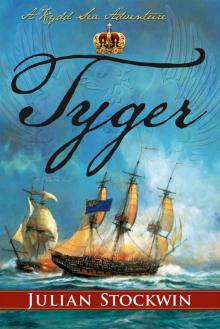 Tyger: A Kydd Sea Adventure (Kydd Sea Adventures)
Tyger: A Kydd Sea Adventure (Kydd Sea Adventures) Seaflower - Kydd 03
Seaflower - Kydd 03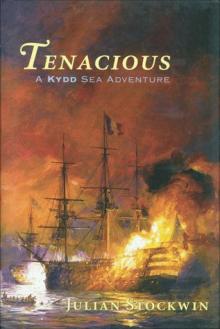 6-Tenacious
6-Tenacious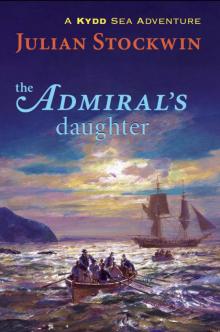 The Admiral's Daughter
The Admiral's Daughter Mutiny k-4
Mutiny k-4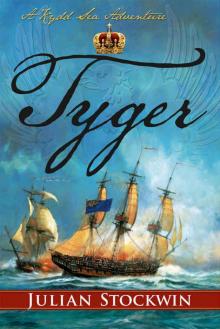 Tyger
Tyger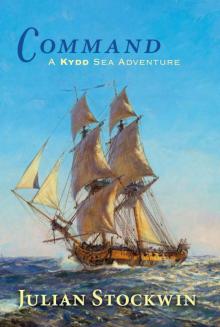 Command
Command Pasha
Pasha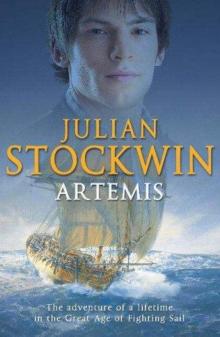 Artemis k-2
Artemis k-2 14-Caribbee: A Kydd Sea Adventure
14-Caribbee: A Kydd Sea Adventure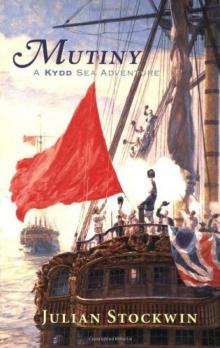 Mutiny - Kydd 04
Mutiny - Kydd 04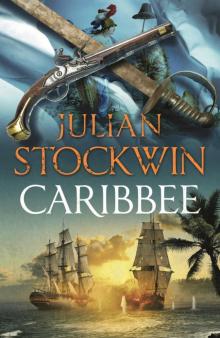 Caribbee
Caribbee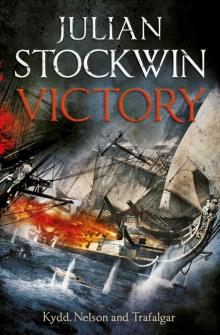 Victory
Victory Quarterdeck
Quarterdeck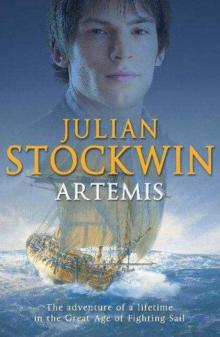 Artemis - Kydd 02
Artemis - Kydd 02 The Powder of Death
The Powder of Death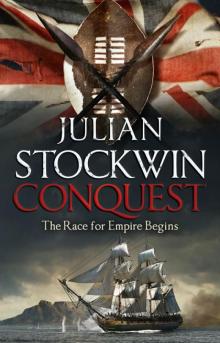 Conquest
Conquest Betrayal tk-13
Betrayal tk-13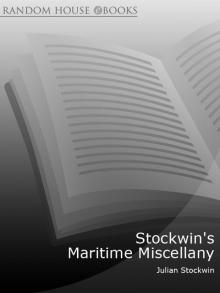 Stockwin's Maritime Miscellany
Stockwin's Maritime Miscellany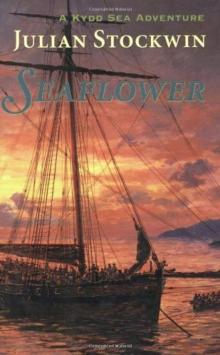 Seaflower: A Kydd Novel
Seaflower: A Kydd Novel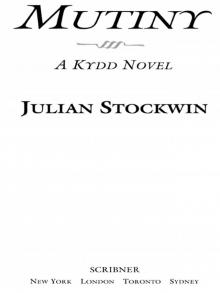 Mutiny
Mutiny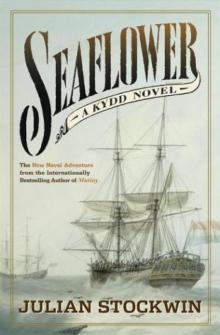 Seaflower k-3
Seaflower k-3 Seaflower
Seaflower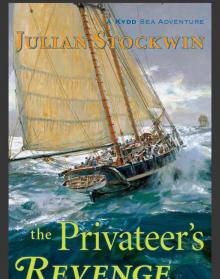 The Privateer's Revenge
The Privateer's Revenge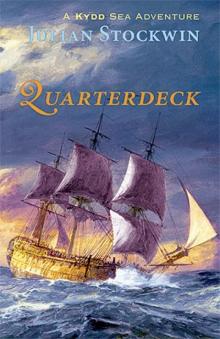 Quarterdeck: A Kydd Sea Adventure
Quarterdeck: A Kydd Sea Adventure Kydd
Kydd Artemis
Artemis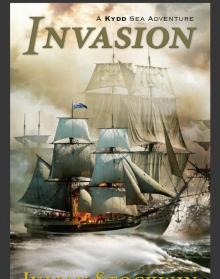 Invasion
Invasion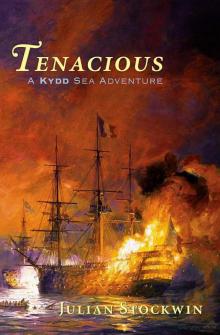 Tenacious
Tenacious 06 - Tenacious
06 - Tenacious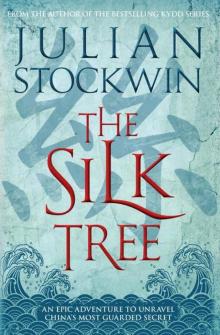 The Silk Tree
The Silk Tree